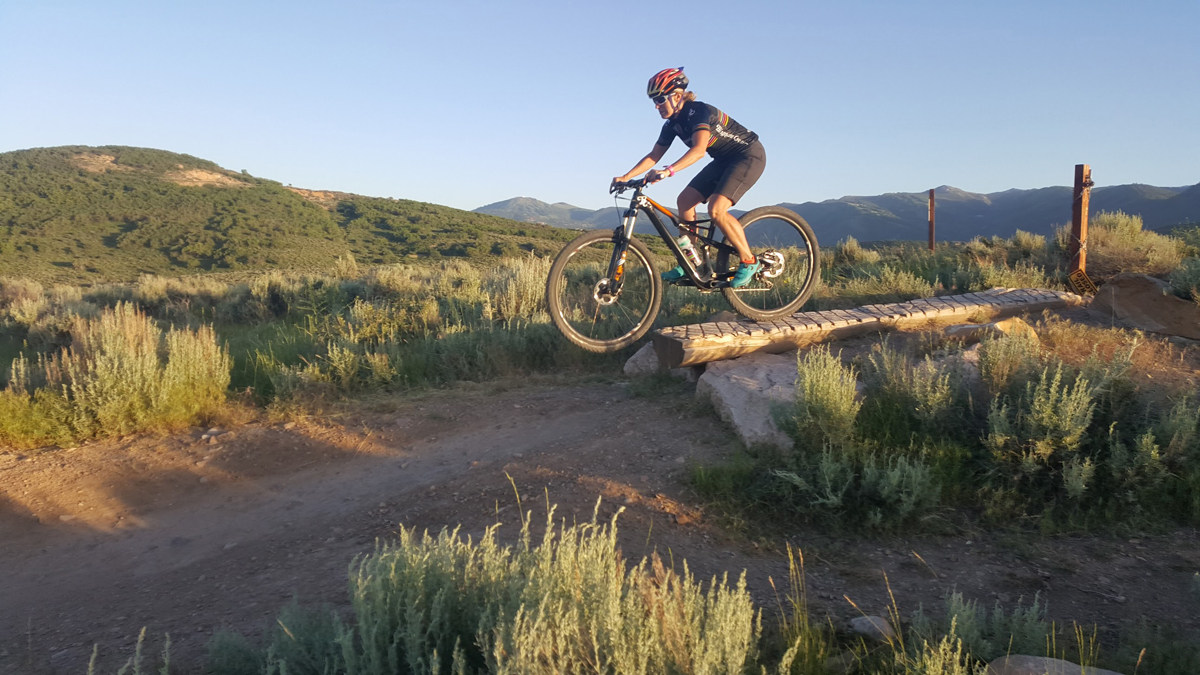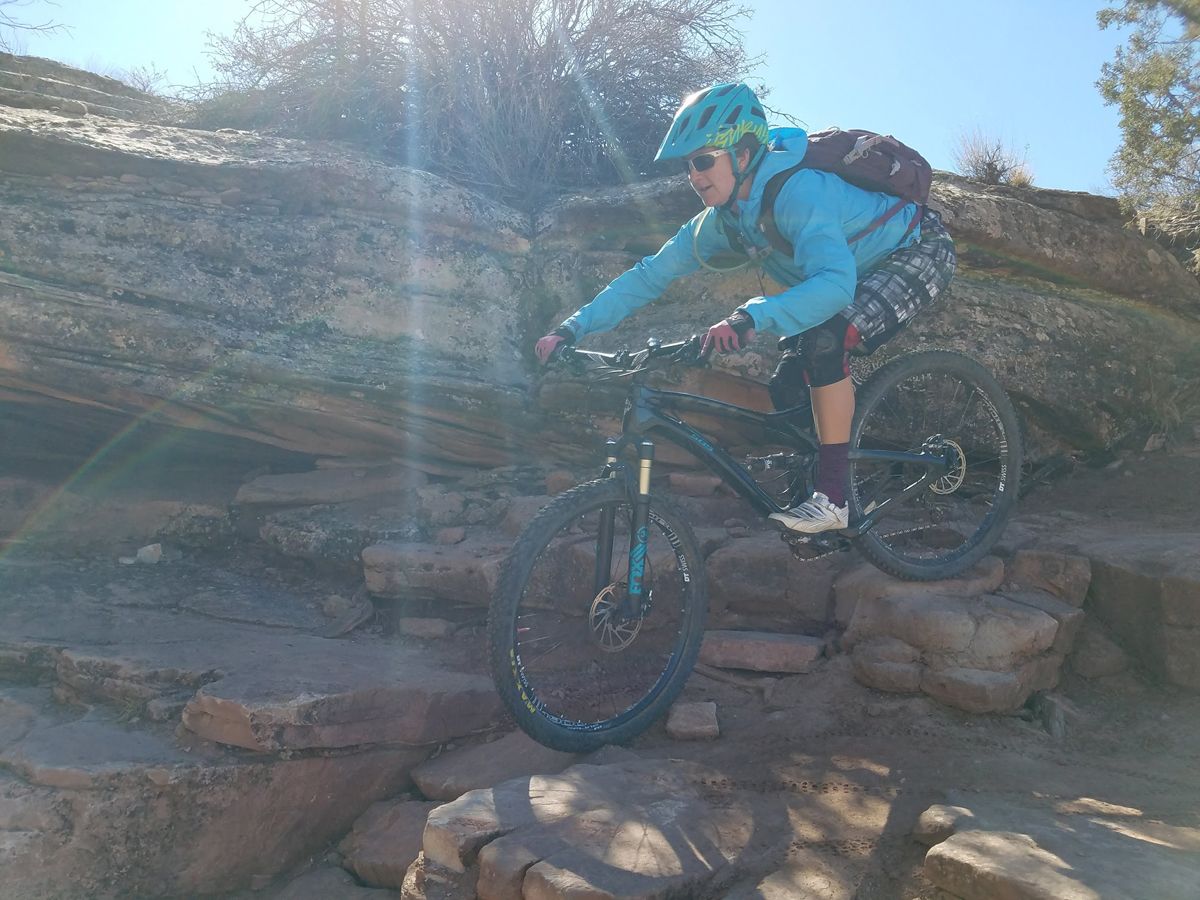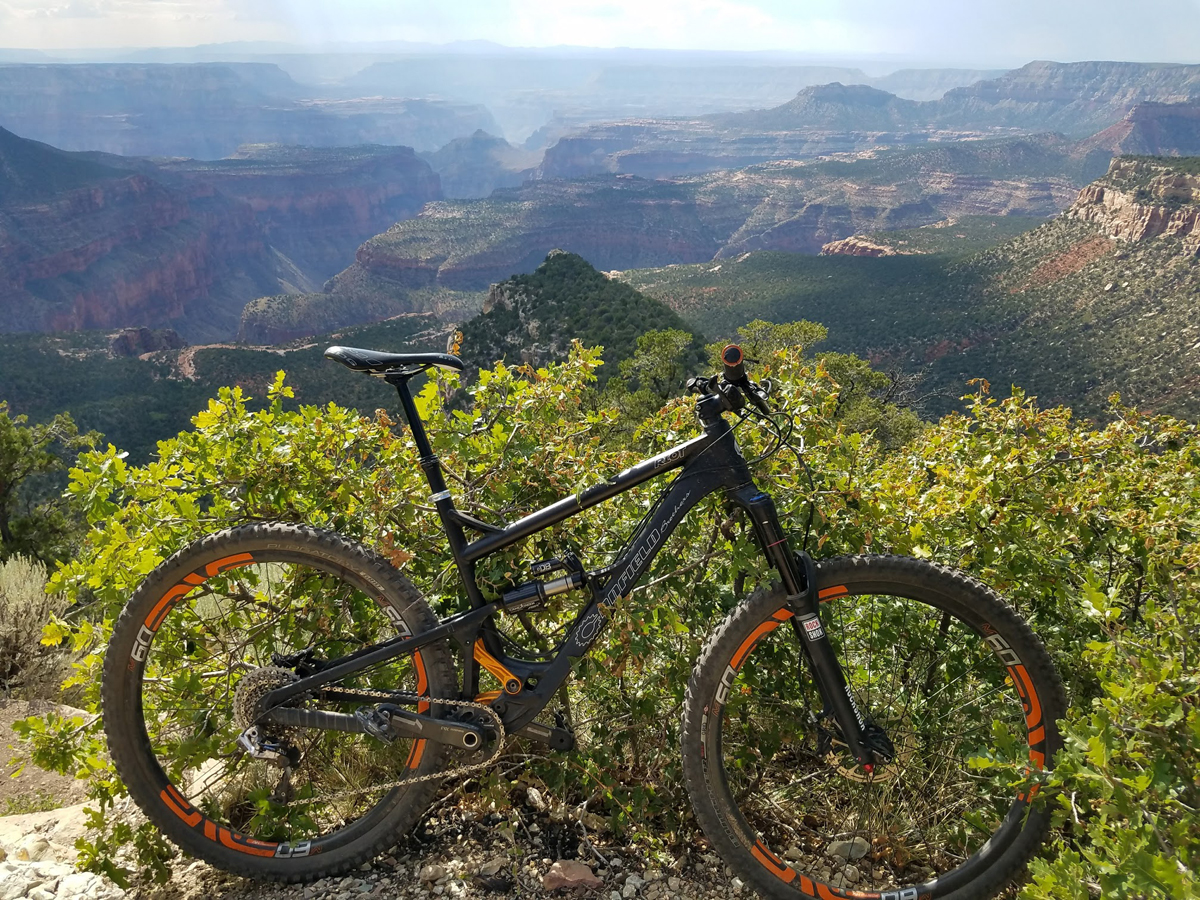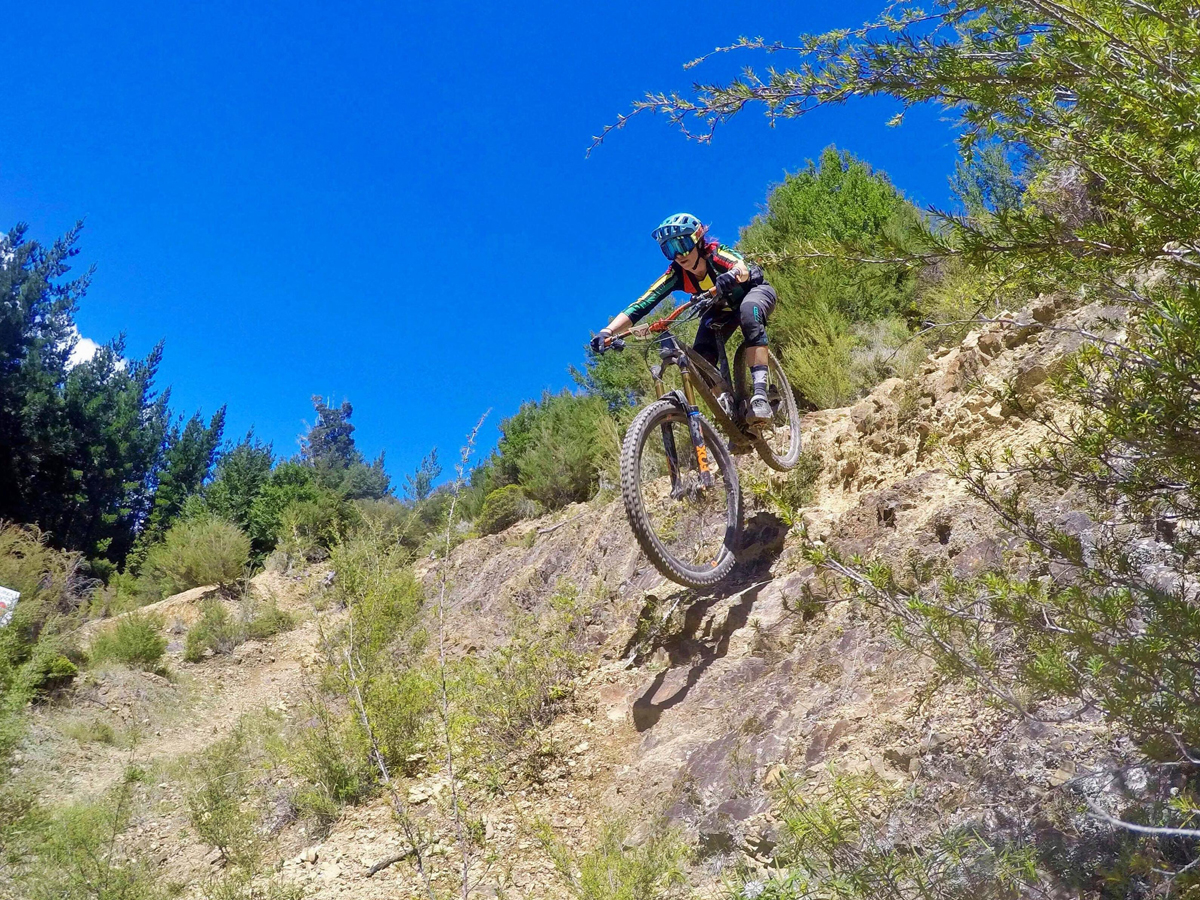By Christine Dern and Rae Sutherland — So, you’ve ridden around on an old bike that has been in the garage for 10 years. Or, you jumped on your friend’s bike that’s way too big for you and attempted to hit the trails but maybe it feels more like the trails are hitting you. Maybe you stare at these mountains that surround us and want to explore them in a way that is different and serene.
Whatever the reason, you are absolutely hooked on this thing called mountain biking and have decided it’s time to purchase a bike, but you are just not sure where to start. Hopefully we can help, just a little.
Here are 5 things to consider when you have fallen in love and need something that is all your own.
Type of riding:
The most important question to ask yourself, what do you want to ride with this bike? You may or may not know enough yet to answer this question and that’s okay. In case you are not yet sure, here are a few related questions to help.
Do you want to ride gravel road or singletrack trail? If you want to mostly ride dirt roads, you will need a lot less *suspension and may even want to look into a gravel bike or cross-over bike. We won’t focus on those here. (*Suspension: Think of it like a shock absorber that compresses and rebounds to lessen the impact felt from mountainous terrain. The front suspension is the fork, the rear is the shock.)
How often do you think you will realistically be riding? The less you ride, the less money you will want to sink into your bike. If you are jumping in with both feet and will be riding multiple times a week, then splurging to get better *suspension and *components for your bike, will make it last longer, function better and overall, make your life easier and more fulfilled. ( *Components: The moving parts that are attached to the frame of your bike, such as the derailleur, brakes, chainring, etc.)
Do you prefer riding Cross Country (XC) or All Mountain? If you like to ride uphill and really enjoy hammering your thighs into the ground you may like XC. If you want to ride a mix of singletrack and fire roads and are not really excited by fast downhill with *features, then you will want to look into a bike with less suspension or even a *hardtail. (*Features: Obstacles in the trail such as jumps, drops, rocks. *Hardtail: a bike with only front suspension or no suspension.)
If you like to ride a mix of uphill and downhill, mostly singletrack or lift accessed trails, if the adrenaline pumping through your veins gives you a kick and you want gravity fed, technical terrain, and/or larger features then you will want to look into more suspension, think 130-160mm of travel, front and rear.

Wheel size:
The options feel endless, but don’t worry, they aren’t. Read on and we will try to help. Circa 2007 and before, the choice was simpler, 26” wheels for mountain bikes. 29” wheel bikes were available but were not as popular or widely supported. 29” and 27.5” wheels have been growing in popularity since then, so much so, that buying a new 26” bike is almost impossible.
What do these numbers mean exactly? The number is the diameter of the wheel and the tire together, the larger the number, the larger the roll over circumference. Here are the most popular wheel sizes with pros and cons for each.
29” (aka 29er) – A larger wheel means it will roll over obstacles with ease. These are sometimes harder to get rolling because of the larger circumference, but as wheels get lighter and made out of different materials, like carbon, this is less of an issue. They can be harder to turn through tight switchbacks due to longer wheelbase (this can depend a lot on the brand and their 29er *geometry specs). Many companies also do not make a small or xs bike in this wheel size due to issues with maintaining performance while fitting two large wheels on a small or xs frame. The larger wheel can also make the bike feel like it has more travel than a similar bike in a smaller wheel size. (*Geometry: the design of a bike frame and the measurements of specifics parts of the frame)
27.5” (or 650b) – These are faster than the 26” wheel and easier rolling over ledges, rocks, etc. They are not so large that they are cumbersome and typically more playful than the larger wheel. You will find them welcoming for all shapes and sizes of people, if you are on a small or xs bike this is a great option.
Mid-fat or Plus 27.5 – The rim size of this wheel is still the same diameter of a 27.5” but the tire is much wider so the rim is wider to accommodate, thus creating a larger rollover circumference. This also makes the bike ride more similarly to a 29er. The larger tires can offer a more cushioned and buoyant feel on the trail and make getting over obstacles easier. If you are looking for a 29er feel in a smaller wheel size or smaller bike size, this is a great option to check out.
26 – Don’t even bother, unless that is all you can find or afford, then go for it and don’t worry, just have fun.

Full suspension or hardtail:
This again comes back to the type of riding you will be doing.
Hardtails – Hardtails generally only have front suspension however can be built with a fully rigid front fork as well. Usually a hardtail would be used for cross country riding but also can be a great entry level bike since the lack of suspension can make them cheaper. Hardtails are very efficient since there is no suspension bob while riding and all of your effort gets transferred directly to the rear wheel. That also means all the bumps and technical terrain gets transferred to the rider. This can cause a slightly harsher, less comfortable feel while riding. Learning to ride on a hardtail is great for skill building since you feel everything. So hardtails can definitely make you a smoother rider and capable of jumping on any bike comfortably.
Full Suspension – at this point, if you can afford a full suspension, this is where you want to be. Suspension has come a long way and makes the ride more comfortable and is great for performance. While exploring full suspension options you will find many different price points. Better suspension usually means more adjustability so the suspension can be tuned to you and a much better feel, but also means higher cost. If you are on a budget, suspension is the one place you will not regret spending a little extra.

Choosing *travel size: It can be confusing to makes sense of all the numbers associate with suspension. We are using the metric measurement of how much travel, or how much compression you have. (*Travel: The distance in millimeters that the suspension moves when fully compressed.)
If you are choosing XC you will look for between 100-120mm of travel. This gives you some travel, but also keeps the bike light, more travel usually means more weight, and allows for more nimble steering
If you want a bike that can be pretty good at everything, look between 120-140mm. This bike will let you have fun on pretty much all terrain and build your confidence up so you feel comfortable. This is also a good starting point if you do not know what you like just yet. You can use this on all trails and specialize with more or less travel as you ride more.
If you will be spending your time doing above 70% downhill then 140-160mm might be a good range for you. The angles of the bike are designed around more descending so your positioning on the bike is already further back making it easier to maneuver down obstacles. This can make going uphill a little harder because it is harder to keep the front end of the bike on the ground and makes the bike quite a bit heavier.
Also look at the style of bikes your friends or the people you go out with will have. If you are going to be riding with these people a lot, it is a good clue to which bike you might want to buy.

Buy new or used
Whether you buy used or new depends mostly on your budget, how much can or do you want to spend? That being said, there are many perks that come with buying a new bike if you buy it at a bike shop. When you go to a shop, you can get professional advice on which bike fits you best and work with the shop to get your bike to fit the way you want. Bike fit can make or break your riding experience. Most shops also offer free service like flat repair or gear, like water bottles or helmets, with a purchase. One more buy-at-a-shop perk, you can often demo bikes and the fee of the demo will go towards a purchase.
Favorite places to buy used bikes include KSL Classifieds, Pinkbike.com, Facebook gear pages, etc. When buying a used bike, it is harder when you are new to the sport. If you don’t know what you are looking for, you may easily pay way too much for what you are getting. Don’t hesitate to enlist help. Friends who have been riding for a while can help you find that diamond in the rough. A word of caution on buying a used bike, there are plenty of scammers online and plenty of stolen bikes circulating too. Read up on common scams before purchasing used online.
Budget
We saved this for last because it is, unfortunately, the most important aspect of buying a bike. As much as it is painful to say it, don’t borrow money to buy a bike, don’t buy more than you can afford. Biking is amazing, but it won’t pay the light bill or buy you a burrito after a hard ride. Set a budget before you even start looking and stick within that budget. This is where buying used can come in handy, you can often find really great bikes for less.
Whatever you do, plan to test ride as many bikes as possible. This is the only way to really know what you like. The way you feel when you are riding is more important than anything else. Most shops or bike manufacturers do free new bike demos, just pay attention to Facebook or bike shop websites. Most bike shops also offer demo rentals to take for a day. Another great option is a bike festival like Outerbike. You can try many bikes next to each other and see what fits. When you are looking to spend a good chunk of change on a bike, spending a little extra to get the right bike will be worth it in the long run.
We hope this article has helped, even just a little. We believe strongly that getting the right bike for you will help you enjoy the sport as much as we do, and that is beyond description. Best of luck in your bike buying pursuits.
Rae Sutherland is founder of WomenMTB, an organization working to empower women and build community through mountain biking. She has been riding for 17 years and loves every second of it. Christine Dern is currently teaching mountain bike lessons to women with Women in the Mountains. She was a pro downhill racer and loves sharing her love of biking with others. She splits her time between working as a mechanic at Competitive Cyclist, teaching skills clinics with women in the mountains, and exploring the world on her mountain bike.
Find out more at Womenmtb.org and womeninthemountains.com

